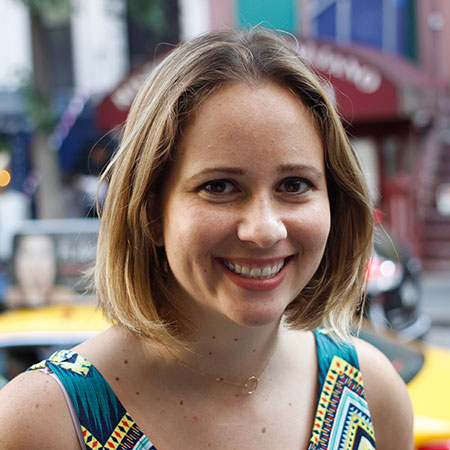From an aerial perspective to a terrestrial one, a colorful entrance canopy outside a New York airport makes a statement from both sides
By Katie Nale
From the epic waterfall in Singapore’s Changi Airport to the aquarium in the Vancouver International Airport, it’s not uncommon for certain attractions to elevate the status of, or even define, the travel hubs they reside in. While Greater Rochester International Airport doesn’t exactly roll off the tongue the way JFK, Heathrow and LAX do, it might not be long before it reaches its own big-name status thanks to its recent world-class endeavor: a color-changing entrance canopy. “The clients wanted a wow factor at the entrance as part of a larger airport renovation project,” recalls principal lighting designer Andrea Hartranft of Hartranft Lighting Design, LLC (Washington, D.C.).
Even before Hartranft was brought on board, the client (Passero Architects) had sold the State of New York on a specific lighting concept a rainbow of light across the top of the canopy. While this created a specific end goal for Hartranft, who worked on the project between 2017 and 2018, she also realized it was imperative to not forsake the experience of drivers and passengers traveling under the canopy. “Making sure the colored light on the top and on the underside was coordinated was very important,” she recalls. Early in the design process the material used for the canopy changed from translucent to opaque, forcing the lighting designer to take stock of what her goals were. “We had to figure out how best to meet the established design promise of a colorful canopy top, properly light the canopy underside for pedestrian/vehicular traffic, while also creating an interesting entry experience under the canopy and meeting budget.”
To do this, a 3D model of the structure was created allowing Hartranft to calculate and confirm the necessary beam angle and output of the fixtures to be used (a task that was also confirmed via hand drawings). The model showcased the structure, which consists of overlapped fabric frames spanning upper and lower roadways in front of the airport and includes a center walkway and bridge.
Creating even lighting for both sides of the canopy was the first hurdle for Hartranft, who specified RGBW fixtures with varying beam spreads mounted to the surface of the garage and airport roof. “Smaller, 20-deg beam RGBW fixtures are mounted 4 ft above grade (above likely snowfall heights) on the garage side of the structure frame to uplight the outer canopy surface at ground level as it can’t be properly addressed from the garage mounting locations,” she says. Glare shields were also added over specific locations. To light the underside, luminaires with a 23-deg beam spread were used for the upper canopy, while fixtures with a 43-deg beam spread were used for the lower canopy. The lights are affixed to the structural frame on both sides of each set of canopy structures to evenly light the undersides.
At ground level, roadway lights provide excellent light levels and uniformity across driving lanes and sidewalks while closely mimicking the organic form of the canopy. Arm-mounted to canopy columns, the lights negate the need for poles while the bridge walkway that runs between sets of canopies is simply lighted with low-glare diffuse ceiling lights. Controlled via timeclock, the fixtures lighting the roadway and bridge are lit via the building management system (BMS). Top canopy fixtures are individually controlled, while under canopy lights are grouped by column bay to closely match the light spread on top of the canopy. Dot strings are controlled per dot.
As the initial concept shown to the public and municipal leaders depicted a rainbow of colors, multiple scenes were developed to allow for an ever-changing palette. The scenes recognize holidays and events, as well as times of day such as dawn, dusk and midnight. The scenes are also dynamic with light scrolling front to back or side to side.
LED fixtures are used to meet requirements for energy efficiency, maintenance and flexibility. Tunable white, individually addressable dot strings mounted to the underside frame are programmed to vary color temperature and intensity. Originally designed to run crosswise on each support, budget constraints led to quantity reductions of the strings and a staggered pattern was used instead.
For Hartranft, the proof of her hard work was soon evident after a long wintry night of programming and testing lighting shows. “I went back to my hotel and the next morning my Uber driver, upon hearing I was headed to the airport, asked me, ‘Have you seen the new canopy at night?’ ”


